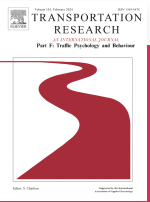-
Partager cette page
Effect of situational factors known to elicit anger on the willingness to take over the driving activity in a highly automated vehicle: A scenario-based study
Publié le 5 avril 2024 – Mis à jour le 6 juin 2024
R. Cazes (CLLE), V. Camps, C Lemercier (CLLE)
https://doi.org/10.1016/j.trf.2024.03.014


Motor vehicle accidents, in part due to human error, continue to cause significant fatalities, a situation that automated vehicles can address when users relinquish driving. However, when the human behind the wheel decides to take over the driving activity, human error is back in the loop. In the context of improving the safety of motorized transportation, this study examines the role of anger in the willingness to take over the driving activity of an automated vehicle classified as levels 4 to 5 according to the Society of Automotive Engineers (SAE). Our study indirectly induces anger by strategically manipulating factors such as motive consistency, agency caused by others, and control potential - factors that are well documented for their role in eliciting anger. Using a scenario-based approach where participants were instructed to catch an emergency train, we manipulated combinations of four factors selected for their association with anger (e.g., late departure × delayed train × reduced speed due to fog × road blocked by another vehicle). Participants (N = 313) were asked to rate their willingness to take over the driving activity as if they were the protagonist. The results showed that the willingness to take over the driving activity aboard a highly automated vehicle could be influenced by emotions, especially anger, elicited by the evaluation of the driving environment. Participants were more willing to take over driving when they judged the driving environment to be inconsistent with the goal of their trip. However, interaction analyses revealed that increasing motive consistency could moderate the negative influences of control potential and other-caused agency on willingness to take over driving. Cluster analysis revealed four distinct subgroups of drivers: High Takeover Willingness, Low Takeover Willingness, Influenced by Other Road Users, and Goal-Directed drivers, each of which showed a unique response to the driving scenarios. This study suggests that understanding the impact of emotions on the willingness to take over driving will help prevent this type of behavior and improve safety.





